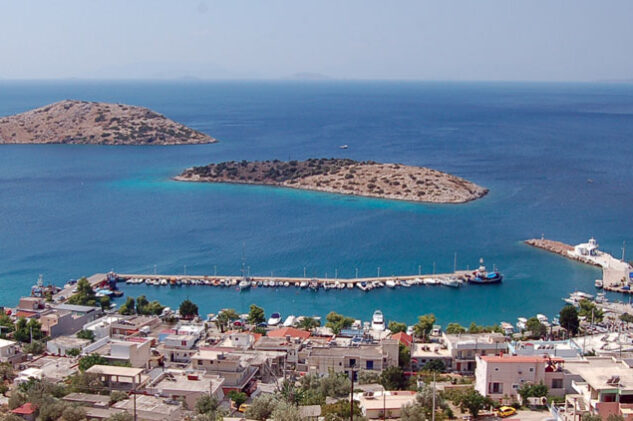
Salamína is the largest island in the Saronic Gulf and lies at the mouth of Elefsína bay, in a close distance. The island basically blocks almost the entire bay, creating 2 narrow passages, Salamína channel and Póros (=channel) Megáron.
According to mythology, it took its name from the fairy Salamína, which was the daughter of god Asopós and Metópi and the wife of god Poseidon. In antiquity, Salamína was also known with the name “Pityoússa” (pítys = pine tree), due to the many pine trees existing on the island (they still do), but also as “Koúlouri”, after the cape on which the ancient city and the harbour were built (findings from the Mycenean and the Classical Era – located close to today’s naval military base).
The island is internationally known from the naval battle that occurred in 480 BC, between the Hellenes and the Persian Empire, the outcome of which put an end to the plans of the Persians to expand in Europe. The Salamína sea battle is an excellent example of naval tactics and is taught in military academies throughout the world.
Salamína is also known as the birthplace of the tragic poet Evripídis (born in 480 BC), one of the most important of antiquity, with many plays of international fame like Iléktra (413 BC), Vákhai (407 BC), Troádes (415 BC) etc. There is a cave in the area of Peristéria, which was used continuously since the Neolithic Era. This cave is known as “Evripídis cave”, as the poet used it extensively for the writing of its theatrical plays.
The history of the island follows at large the history of Athens. It was conquered in 318 BC by the Macedonians but 100 years later it is returned to Athens. At the end of the 2nd century AD, the ancient city of Salamína has been abandoned and its inhabitants settled mainly in two villages. The first one was situated where the village of Aiákeio lies today and the other one where Abelákia village is.
At the Byzantine Era, Salamína was considered among the cities of the empire. In 1202 AD, with the fall of Konstantinople to the Franks, Salamína goes to a Venetian rule up until 1460 AD, when it was conquered by the Turks. During the Turkish rule, the island suffers from poverty. Reports from the 17th century mention that there were only 3 small villages on the island (with a total population of 600 people), the largest of which was Koúlouri (today’s city of Salamína).
During the Hellenic Revolution of 1821 against the Turks, Salamína played a key role mainly because it was geographically close to Athens and Peiraiás but also because during the Turkish rule the islanders had permission to carry weapons. In 1824 AD, the first print of the “Athens newspaper” was published on the island and in 1827 Giórgos Karaiskákis, one of the heroes of the Hellenic Revolution, was buried in Ágios Dimítrios.
Today, Salamína is once again prospering. In 1881, the Hellenic Navy built its base at Paloúkia. During the first decades of the 20th century, the Hellenic merchant navy developed significantly, a fact that positively influenced today’s Salamína. However, the industrialization of the northern half of the island, after the 2nd World War, lowered significantly its touristic value.





